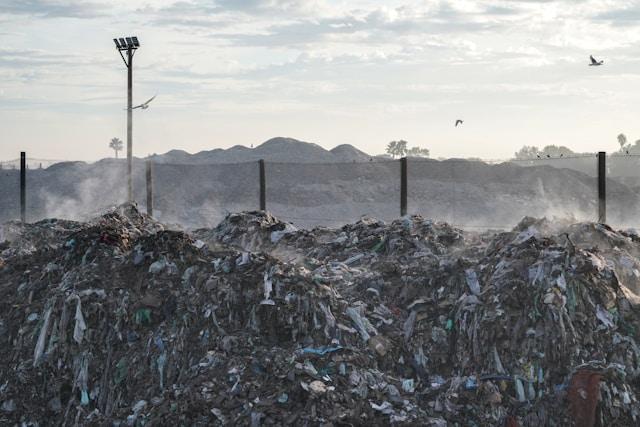The Importance of Regular Maintenance for Optimized Waste Management: Ensuring Efficiency and Sustainability
Waste management plays a crucial role in maintaining a clean and sustainable environment. Regular maintenance practices not only enhance operational efficiency but also extend the lifespan of waste management systems. This proactive approach significantly reduces costs and minimizes the negative impacts of waste on communities and ecosystems.
Ignoring maintenance can lead to costly repairs, operational downtime, and environmental hazards. Regular inspections and preventive measures ensure that systems function optimally and meet regulatory standards. By prioritizing maintenance, organizations can improve service quality and community satisfaction.
Investing time and resources in regular maintenance fosters a culture of responsibility toward waste management. It empowers communities to engage in and support sustainable practices that benefit both present and future generations. Understanding the value of maintenance is essential for any organization committed to effective waste management solutions.
Fundamentals of Waste Management
Effective waste management involves a systematic approach to handling waste from its generation to disposal. Understanding waste streams and implementing sorting and separation techniques are essential components for optimizing waste disposal practices.
Regular maintenance is crucial for the optimal performance of any waste management system, particularly when using balers and compactors. A well-maintained machine not only reduces the risk of unexpected breakdowns but also ensures that waste is processed efficiently, contributing to a cleaner and more organized workplace. For those managing such equipment, it’s essential to have a structured maintenance plan in place, which can help prevent costly downtime and extend the lifespan of your machinery.
Understanding Waste Streams
Waste streams refer to the various types of waste produced by different sources. They can be categorized into municipal solid waste, hazardous waste, construction and demolition debris, and industrial waste.
Each waste stream requires tailored management strategies. Municipal waste often consists of food scraps, recyclables, and general refuse. Hazardous waste includes items like batteries and chemicals that require careful handling due to potential harm.
Identifying the composition of waste streams helps in developing targeted programs for reduction, recycling, and disposal. Proper classification improves efficiency in collection and enhances the effectiveness of waste treatment processes.
Sorting and Separation Techniques
Sorting and separation are critical for effective waste management. Implementing these techniques enables the recovery of recyclable materials and reduces the volume sent to landfills.
Common Techniques:
- Source Separation: Households and businesses separate recyclables from general waste. This promotes cleaner recycling streams and reduces contamination.
- Mechanical Sorting: Facilities use machinery to separate waste based on size, weight, and material composition. This method increases processing speed and efficiency.
- Manual Sorting: Workers physically sort waste, especially in areas with mixed streams. This technique is effective for identifying specific recyclable materials.
These practices lead to higher recycling rates and lower disposal costs. Efficient sorting and separation not only conserve resources but also lessen environmental impact.
Benefits of Regular Maintenance
Regular maintenance of waste management systems offers significant advantages. It enhances the lifespan of equipment and ensures consistent performance throughout operations.
Extended Equipment Lifespan
Maintaining waste management equipment increases its operational lifespan. By conducting routine checks and timely repairs, organizations can prevent severe breakdowns.
Examples of maintenance activities include:
- Inspections: Regular assessments to identify wear and tear.
- Cleaning: Removing debris to ensure optimal functioning.
- Lubrication: Reducing friction among moving parts to prevent damage.
Neglecting maintenance often leads to costly replacements. A proactive maintenance strategy not only saves finances but also secures investments in equipment.
Consistency in Waste Processing
Routine maintenance ensures that waste processing operations remain consistent. Properly maintained equipment operates efficiently, leading to smooth workflows.
Benefits of consistent waste processing:
- Reduced Downtime: Fewer interruptions due to maintenance-related failures.
- Improved Safety: Well-maintained systems minimize the risk of accidents.
- Enhanced Productivity: Reliable equipment supports higher throughput of waste processing.
By prioritizing maintenance, organizations can improve their overall operational efficiency and maintain high standards in waste management practices.
Maintenance Strategies and Scheduling
Effective maintenance strategies and proper scheduling are crucial for ensuring that waste management systems operate efficiently. These strategies help organizations optimize resources and minimize disruptions.
Predictive vs. Preventive Maintenance
Predictive maintenance utilizes data analytics and monitoring tools to predict when equipment failures might occur. This strategy allows for maintenance actions to be taken just before a failure, reducing downtime and minimizing costs. Techniques such as vibration analysis, thermal imaging, and oil analysis are commonly employed to assess equipment condition.
Conversely, preventive maintenance involves routinely scheduled inspections and servicing to prevent equipment failures before they happen. This method includes tasks like regular cleaning, lubrication, and part replacements as per manufacturer recommendations. While preventive maintenance offers systematic approaches to managing assets, it can lead to unnecessary service interventions if not aligned with actual equipment needs.
Planning and Documentation
Planning and documentation are fundamental for effective maintenance scheduling. A detailed maintenance plan should include timelines, checklists, and responsible personnel. This structured approach ensures that all maintenance activities are performed consistently and on time.
Documentation serves as a record of all maintenance actions taken. It captures insights on equipment performance, service history, and issues encountered. This information assists in identifying patterns and influences future maintenance impact assessments. A digital maintenance management system can streamline the planning and documentation processes, enhancing overall efficiency.

